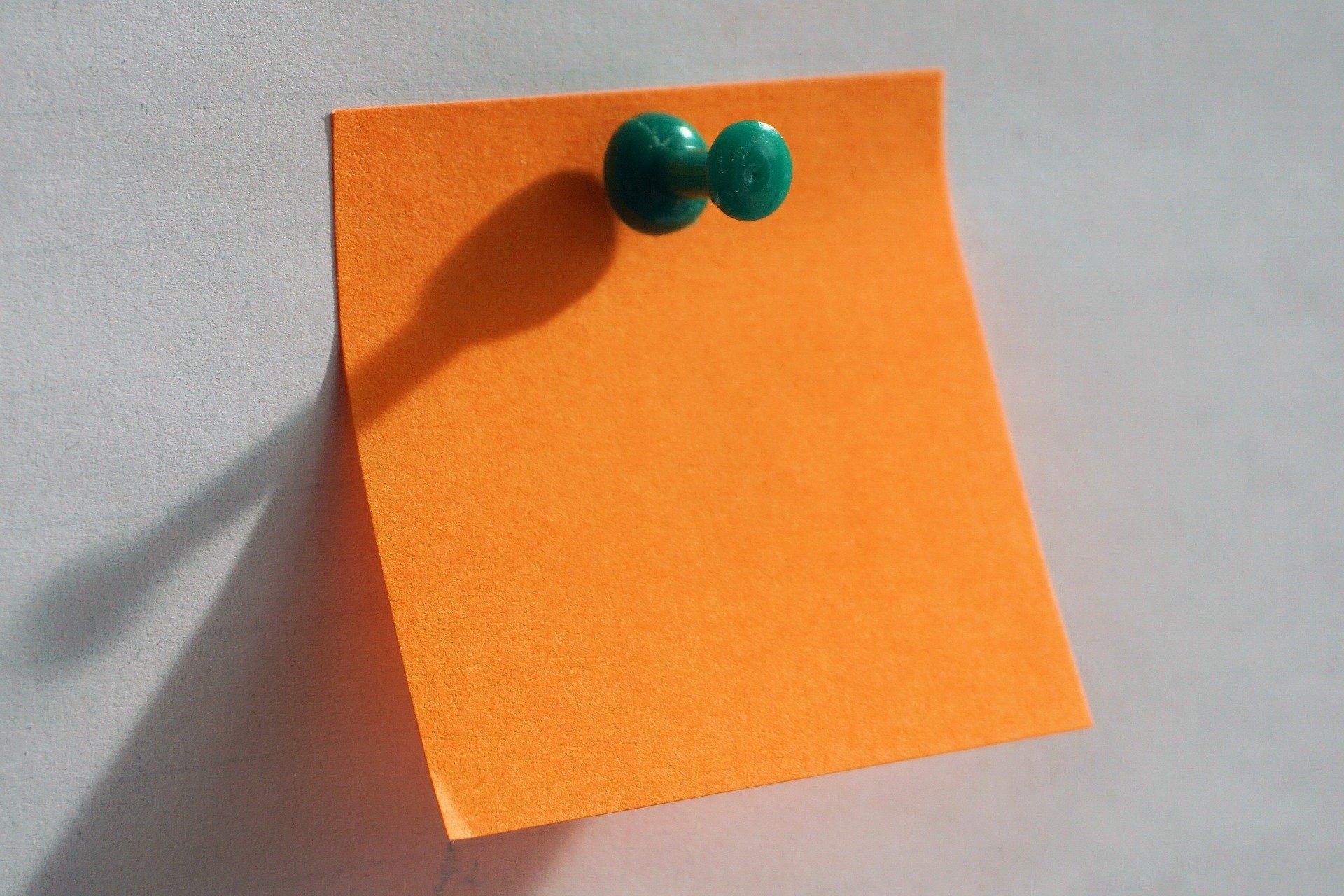Self-Talk: How to Deal with Negative Thoughts
How to communicate effectively with your body
We
communicate to ourselves all the time. We analyze, we respond or react, we
express our feelings to ourselves with our thoughts. We do a lot of self-talk –
up to 300 words per minute. Much is normal thoughts – “I’ll do the laundry when
I get home” or “I need to answer that e-mail” or “I should call my mother.” But
there is a lot of negative self-talk – both obvious criticisms “I’m terrible at
this” or the less obvious “I never know what to do” or “I’m nervous when I
perform” or “I panic at critical moments.”
Negative self-talk affects our confidence and our self-image. If your self-image is one of incompetence, inferiority, anxiety, or failure, you are not likely to produce a stellar performance, and you will lack confidence. Proper self-talk will help both your overall confidence and your performance.
Self-talk should be either positive or constructive. We easily yell at ourselves for mistakes, but when was the last time you told yourself you did something well right after you did it? At the end of the day, we tend to dwell on our mistakes, but instead we should pay more attention to the things we do right. Reminding yourself regularly of what you’ve done well helps boost your self-image and confidence.
Self-talk is often negative. What do you say to yourself now if something goes wrong? If you are like most people, you yell at yourself in ways you would never speak to anyone else. You might call yourself names, put yourself down, and reinforce that you “can’t” do it. Maybe you allow yourself to get frustrated, and start rushing, using poor technique and basically throwing away your abilities in order to match your self-image of failure.
Negative thoughts prevent you from performing well. In sports, they serve no one but your opponent. Positive self-talk is key. There should be no name-calling, or putting yourself down. Treat yourself as you would a little, vulnerable child. If he made a mistake, would you chew him out? Or would you tell him it’s okay, and help him find a way to do it better?
Words to Avoid and Replacement Words
- Absolutely no “I can’t.”
Use “I’m having trouble with”
or “I need to”
instead. “I’m having trouble with” is good when you are trying to figure out what’s going wrong, especially if you realize you are going to need your coach, teacher, or boss to help you. “I need to” is great when you know how to fix the problem.
- You can also switch “I can’t”
to “I must.”
This is particularly useful when you lack the courage to make the attempt. Change “I can’t get around his parry” to “I must get around his parry.” “I can’t get my horse over this jump” becomes “I must get my horse over this jump.” “I can’t return her serve” changes to “I must return her serve.” “I can’t write this paper” becomes “I must write this paper.” “I can’t ask my boss for a raise” changes to “I must ask my boss for a raise.” You’ll be surprised at how much this small change in thinking will help your training, your competing, and your life.
- “Try”
sounds like an innocent word, but it is not. When you TRY, you are giving yourself an excuse to fail. You are not committing to the goal, just to a little effort. When you TRY, your action is full of effort, but you are not committed to success. You are leaving yourself room to fail. “I TRIED to study, but my favorite show was on.” “I TRIED to practice, but my friends kept texting me.” “I TRIED to write the proposal, but …” Notice that TRYING is often followed by “but.” TRYING is followed by excuses, not success. Don’t TRY it, DO it. Replace “I’ll try it”
with “I’ll do it.”
- “It’s hard”
or “it’s difficult”
are self-fulfilling prophecies, and an excuse to fail. I did an experiment once, when I was teaching a new action. I told one group of students that it was very hard to do and they would find it difficult. I told another group of students that it was easy. Guess which group learned it faster and had confidence in the move more quickly? Right, the students who were told it was easy. (And yes, I did feel bad about the first group of students, but the next week I told them it would be easy now that it was their second training session on it, and of course, it was.) Replace “it’s hard” with “I can do this easily by giving it my full attention.”
With this phrase, you will put yourself on track to perform well.
- “I’m afraid this might happen”
or “I’m afraid that will happen.”
Remember, it is rare for anyone to do anything perfectly. Nobody wins a fencing medal in the Olympics untouched. EVERYBODY gets hit. Many work presentations and musical performances aren’t perfect. Nobody is perfect at parenting. Remind yourself you can deal with whatever happens – that you can handle it if something doesn’t go as planned. Take the risk and do it. Tell yourself “I can deal with it if _____ happens.”
When you do visualization training, practice these scenarios until you have good outcomes.
- “I hate.”
Instead of saying that about competing against lefties, or tall people, or whomever you feel less confident against, tell yourself that you love the challenge.
“I love the challenge”
gets you excited to solve the problems presented to you.
- “Should”
implies that you don’t but could. So instead of saying “I should
train 4 x/week” say “I must
train 4x/week.” You’ll either do it or have to admit to yourself that you are choosing
not to. Maybe you are choosing not to because life is getting in the way and something else has to take priority now, or maybe you are choosing not to because you just don’t want to work that hard. Either way, understand you are making the choice.
- “Should have” implies that you were meant to do it but forces beyond your control stopped you. You “could have” won if you had performed better, but your opponent won because he was doing better than you, physically, mentally or both. Instead of “should haves” think about what you will do to compete against that person better the next time you meet up. Remember, when you lose, if you learned something from it, then it is not a complete loss. Maybe you think you “should have” said a particular thing in your discussion at work, but that is in the past now, and the past cannot be altered. Change “I should have” to “next time I will” so that you will be ready for future situations.
- “Not” is another innocent-sounding word that trips up many people. Brains think in pictures and we have no picture in our brains for “not”. Tell yourself what TO do , instead of what NOT to do. If I tell you NOT to think of a pink elephant, you will immediately picture one. But if I tell you to think about a prowling tiger, you will think about the prowling tiger, and not the pink elephant. If you tell yourself NOT to move your arm a certain way, you will do just that. But if you tell yourself how you want your arm to move, then your body knows what to do and will be much more likely to do it. If you tell yourself not to say “ummm” during your presentation, you will say it many times. Instead, tell yourself to speak clearly and distinctly, allowing silence to fill any pauses. Replace “not” with what you actually want to do.
How to Deal with Negative Thoughts
So, what do you need to do to put these changes into practice? And what other strategies can you use alongside rephrasing to get rid of these “I can’ts” or “I’ll never be able tos”?
Awareness . You need to notice what you are saying to yourself. Try putting 25 paper clips into your right pocket in the morning. Every time you catch yourself with a negative thought during the day, move a paperclip to your left pocket. Try it for a few days and see how often you have negative thoughts. (These are negative thoughts about YOURSELF, not about how boring math class is or how your boss is mean.) Most people will catch themselves thinking negative thoughts 20 – 30 times a day. One student I had counted 736 in a single day!
Blocking. You need to STOP those negative thoughts. Mental imagery is a good way of doing this. Some people like to imagine a big stop sign, or erect a stone wall between themselves and the negative thought. You can imagine the thought bursting into flames, or see it on paper that you crumple and throw away. Whatever works for you is fine.
For a persistent thought, you can also “tree it” – physically put the thought somewhere. There is a very rough game played by some tribes in Africa which typically involves a fair amount of violence. When the game ends, as everyone leaves the playing area, each player touches a tree. When asked why they did that, they explained that they left their thoughts of anger towards the other team there. Otherwise, they felt they would end up having wars between the tribes.
I once worked with a horseback rider who had a pretty negative trainer. As she rode her jumper horse around the course, her thoughts were full of the negative comments her trainer had said to her. This made her tense, her horse tense, and things were not going well in competitions. Once she learned to “tree” her trainer at the gate as she entered the ring, her performance improved tremendously. She was able to focus on the task at hand and ride her best.
I found as a competitor that I could also “tree” pain. When I’d had an accident and my neck was very painful for a long time, before I started competing I would lean over and smack the floor with my hand to “tree” the pain there. I knew the pain would be back when I was done, but it helped allow me to focus on what I needed to instead of the pain.
Sometimes people just use a simple hand motion, as though they are pulling that negative thought out of their head and throwing it away. A surefire way to get rid of it is to do something silly – a little “happy dance” or movement that makes you smile. (Of course, you can’t be too inhibited to do it, if a “happy dance” is your plan.)
Replacement. Once you are aware of a negative thought and have blocked it or “treed” it, you need to replace it with a productive thought. If you’ve just made an error and had a negative thought, then you block it or tree it, and then replace it with a useful thought – solve the problem of what to do next to score.
Some people simply replace a negative thought with a positive affirmation. If they find that the cause of the error was their own loss of focus, they tell themselves “I am focused.” Or perhaps they messed up the distance, so they tell themselves “I control the distance.” Maybe they made a half-hearted action, so they remind themselves “I go all-out.”
Sometimes our negative thoughts come in the form of questions. “Why do I always drop my hand?” or “Why do I always miss?” If you ask yourself the question this way, the answer won’t be nice. “Because I’m a terrible athlete” or “Because I never get it right” or “Because I’m stupid.” But you need to ask a better question. Instead of asking “Why do I always drop my hand?” you need to ask “How can I keep my hand in position?” or better “What exercises do I need to do to practice keeping my hand up?” Change “Why do I always lose my balance” to “What exercises will improve my balance?” This way you are focusing on the solution to the problem, which is what you really want.
You can use these techniques to get rid of negative thoughts and replace them with useful ones. Instead of filling your mind with worry about whether or not you will score, focus on choosing your action and let yourself commit to it. Speak nicely to yourself, give your body clear instructions in a positive way, and improvement will follow.





